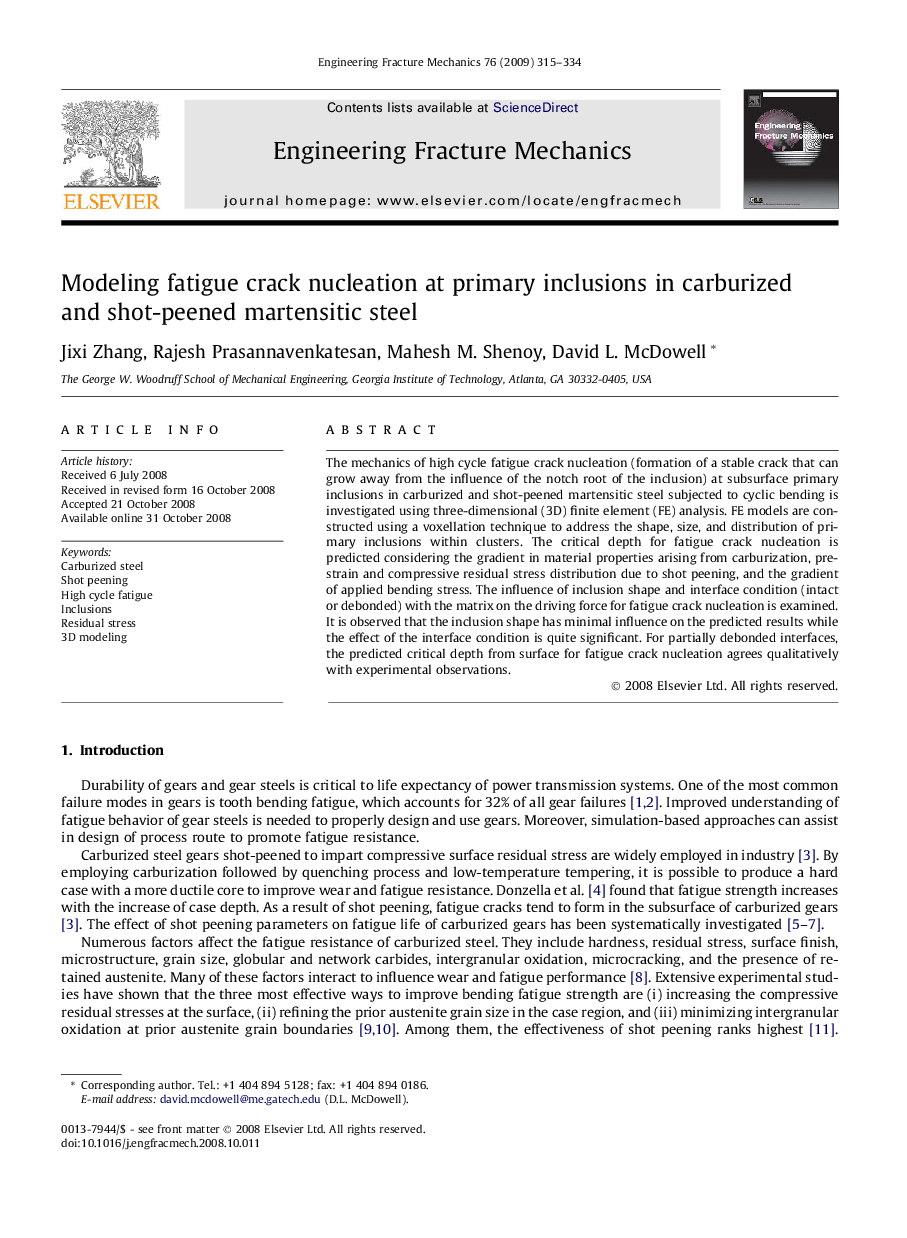| Article ID | Journal | Published Year | Pages | File Type |
|---|---|---|---|---|
| 767935 | Engineering Fracture Mechanics | 2009 | 20 Pages |
The mechanics of high cycle fatigue crack nucleation (formation of a stable crack that can grow away from the influence of the notch root of the inclusion) at subsurface primary inclusions in carburized and shot-peened martensitic steel subjected to cyclic bending is investigated using three-dimensional (3D) finite element (FE) analysis. FE models are constructed using a voxellation technique to address the shape, size, and distribution of primary inclusions within clusters. The critical depth for fatigue crack nucleation is predicted considering the gradient in material properties arising from carburization, prestrain and compressive residual stress distribution due to shot peening, and the gradient of applied bending stress. The influence of inclusion shape and interface condition (intact or debonded) with the matrix on the driving force for fatigue crack nucleation is examined. It is observed that the inclusion shape has minimal influence on the predicted results while the effect of the interface condition is quite significant. For partially debonded interfaces, the predicted critical depth from surface for fatigue crack nucleation agrees qualitatively with experimental observations.
